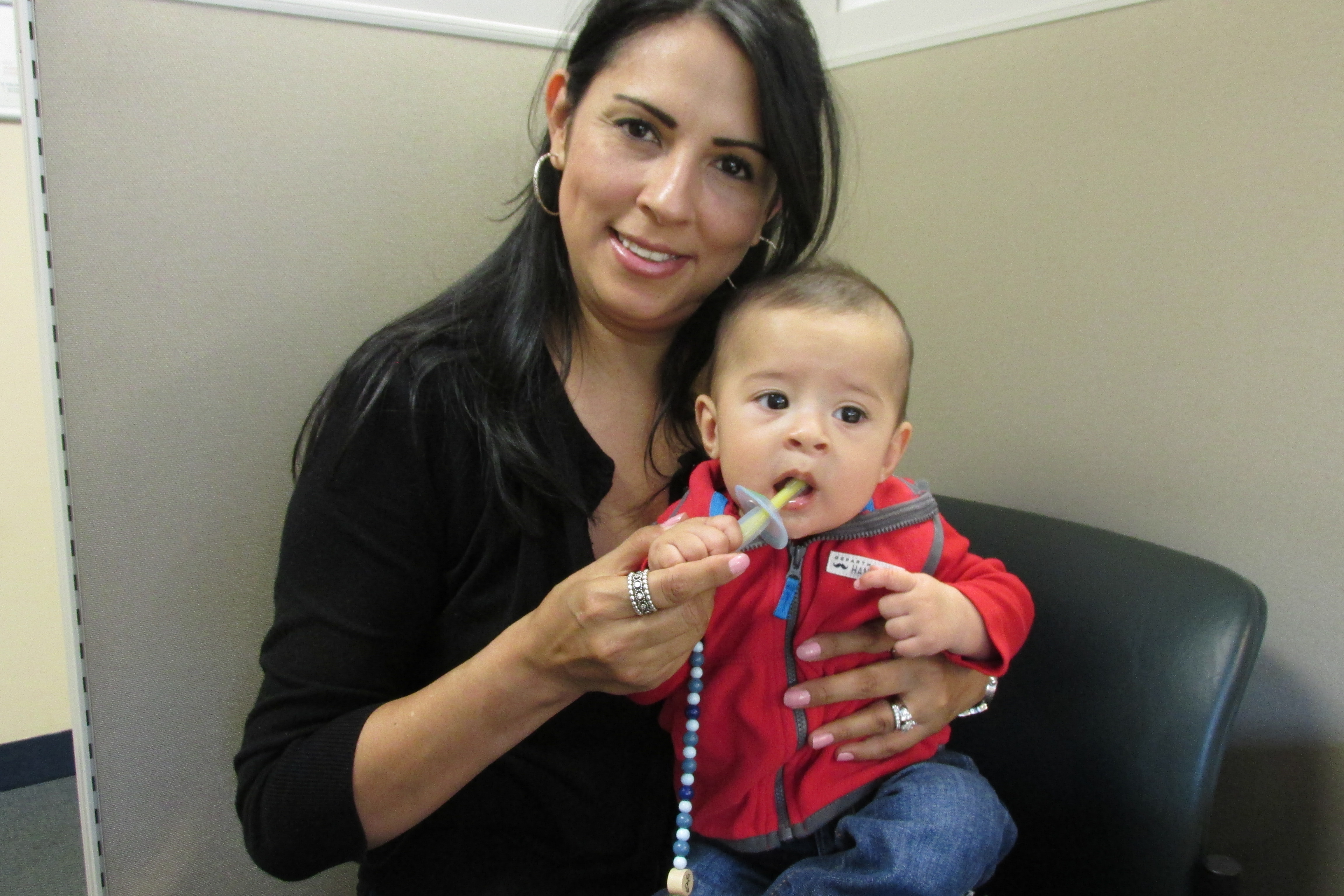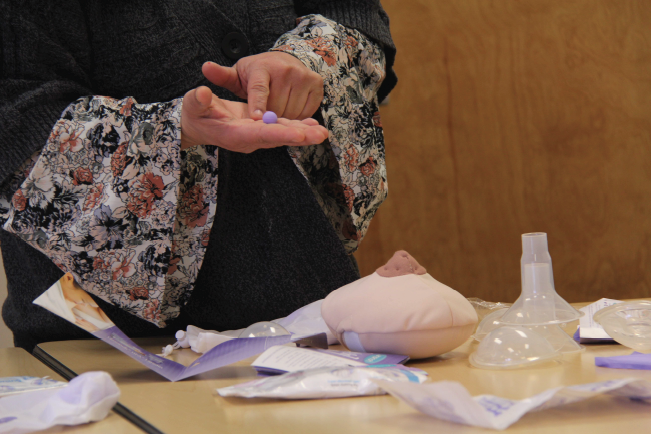 By Misty Romero, BA, RN, IBCLC and Hrishikesh T. Shetty, Institutional Giving Manager, Erie Family Health Centers
By Misty Romero, BA, RN, IBCLC and Hrishikesh T. Shetty, Institutional Giving Manager, Erie Family Health Centers
Through NACCHO’s Building a Breastfeeding Support Model for Community Health Centers’ eight-month project, Erie Family Health Centers, a community health center network comprising 13 sites, was able to standardize and improve breastfeeding support throughout the organization and make services more accessible to patients. To reflect Erie’s mission and evidence-based medical practice, we updated our organization-wide breastfeeding and employee pumping policies and procedures to align with state and federal standards. We reconvened our internal workgroup; The Erie Breastfeeding Committee (EBC) and increased Erie’s organizational capacity by training our lactation specialists as trainers, who then trained more staff. Finally, we improved our clinic environment to be supportive of breastfeeding.
Problem Statement
Mothers with lower rates of breastfeeding tend to be young, low-income, African American and Hispanic, unmarried, less educated, overweight or obese before pregnancy, and more likely to report their pregnancy was unintended (Ahluwalia IB, Morrow B, and Hsia J. Why do women stop breastfeeding? Findings from the Pregnancy Risk Assessment and Monitoring
System. Pediatrics 2005; 116:1407–1412). At the same time, while breastfeeding is beneficial to almost all mothers and infants, the benefits may be significantly greater for minority women who are disproportionately affected by adverse health outcomes (Mirsa D, editor., ed. The Women’s Health Data Book: A Profile of Women’s Health in the United States, 3rd ed. Washington, DC: Jacobs Institute of Women’s Health and The Henry J. Kaiser Family Foundation, 2001).
At Erie, 73% of patients are Latino, 12% are African American, 63% have Medicaid, 29% are uninsured, and 94% are at or below 200% federal poverty level (FPL). Lack of education, language barriers, and access to resources have a negative impact on breastfeeding rates among Erie patients. The community surrounding Erie’s West Town Health Center is home to approximately 21,500 residents, with 46% of the people coming from minority populations including Hispanic (23.7%), Black (18.8%) and Asian (3.7%) (statisticalatlas.com). Given the high volume of underserved families being served at Erie, we have enormous potential to improve breastfeeding outcomes among low-income, minority Chicagoans.
Solutions and Results
To address these rates, Erie created a system-wide and comprehensive breastfeeding support structure that impacts breastfeeding awareness and adherence among patients and staff, and can serve as a critical resource in the community. The following activities helped us achieve an improved breastfeeding program for our patients and staff:
- As a community health center network made up of 13 sites, each location had adopted its own set of breastfeeding practices and standards for staff and patients that were not uniform. With support from NACCHO, we were able to establish a standardized clinical breastfeeding policy and procedure for all Erie staff and patients.
- Provided two of Erie’s International Board Certified Lactation Consultants (IBCLCs) with specialized training to enable them to provide enhanced breastfeeding education to the patient facing staff at all sites. Erie currently has two IBCLCs within our network, certified to provide lactation consultation. However, the two IBCLCs encounter challenges in serving the growing breastfeeding patients at Erie while having to meet the demands of all other aspects of their jobs. In response, Erie trained two staff members through the Institute for the Advancement of Breastfeeding and Lactation Education (IABLE) to become Erie’s Breastfeeding Champions. Post-training, our IBCLCs now provide regular breastfeeding support and education classes at their home sites to other Erie staff. So far, 10 staff members have attended the 16-hour Outpatient Breastfeeding Champion course.
- Increased the number of sites within our network with the capacity to provide “on the spot” lactation assistance to patients and ongoing breastfeeding education classes. Erie currently provides lactation support at four sites and holds free prenatal breastfeeding education classes at five of our health centers.
- Improved the clinic’s environment to make our space more actively welcoming and supportive of breastfeeding. We displayed the International Breastfeeding symbol at the entrance of all Erie clinics. In addition, in August, during World Breastfeeding Week, we reached over 17,000 people across all our social media platforms with electronic breastfeeding resource materials. A one-minute breastfeeding informational video delivered in Spanish by Dr. Caitlin Lassus, our Family Medicine provider, was a huge success and received over five hours of total play time, reaching over 3,000 online viewers.
 Lessons Learned
Lessons Learned
Re-establishing a dedicated Breastfeeding Committee (EBC) was beneficial to inform activities at the beginning of our grant period. It was critical to have a collaboration of staff at all clinical and administrative levels to deliver a successful breastfeeding program. Buy-in from the nurse, case managers, doctors, women’s health promoters, medical assistants, lactation consultants, social workers, and Erie leadership was crucial in improving patient engagement and staff awareness of Erie’s breastfeeding services.
A challenge in delivering the program was the time needed by staff to deliver breastfeeding education and support services to patients; This was greater than what we had projected at the beginning of the program. Clients’ language and culture barriers increase the direct service time needed by clinic staff to provide breastfeeding education and support. However, throughout the grant period, we were able to meet client breastfeeding needs, maintain positive organizational attitudes towards breastfeeding, and sustain buy-in from key members of our leadership. Erie continues to support and promote a positive breastfeeding culture across the organization, and we are confident that we will continue these achievements in the future.
For more information, contact Misty Romero at [email protected] or Hrishikesh T. Shetty at [email protected] .



